Cards In This Set
| Front | Back |
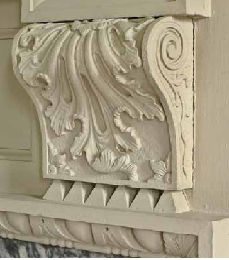 Name: Author: Date: Relevance: |
Carvings at Mount Pleasant
Martin Jugiez
1763-65
These were wood trusses carved by Jugiez especially for Munt Pleasant.
Martin Jugiez was an immigrant to Philadelphia in 1760 who was known for his bold carving abilities. The woodwork trusses at Mount Pleasant are attributed to him.
|
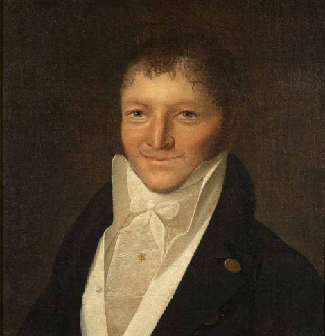 Name: Author: Date: Relevance: |
Charles Brockden Brown
William Dunlap, artist
1809
Charles Brockden Brown was a famous Philadelphia novelist known as the "father of American horror." He is famous for translating real life tragedies into elaborate works of gothic fiction. He was also the first American novelist to truly make a living as a writer.
|
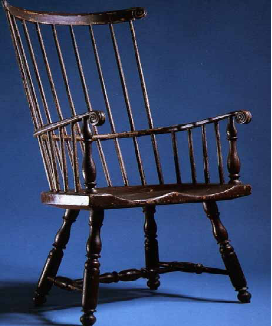 Name: Author: Date: Relevance: |
Philadelphia Windsor
1730's
Windsor chairs were a symbol of American craftsmanship and democracy because they transcended social and economic boundaries. They were modest, inexpensive, populist design.
|
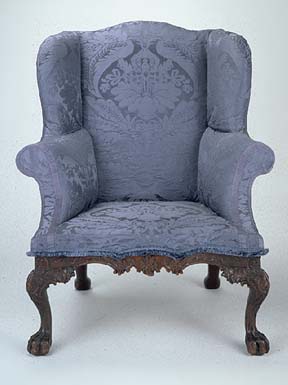 Name: Author: Date: Relevance: |
Easy Chair
Thomas Affleck
1770-1771
Great example of Georgian design. Maker Thomas Affleck was also famously imprisoned and exiled to Virginia in 1777 because he was seen as potentially loyal/helpful to the British invaders.
|
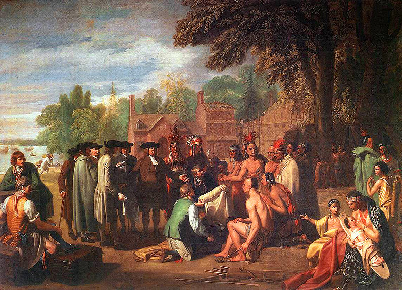 Name: Author: Date: Relevance: |
William Penn's Treaty with the Indians
Benjamin West
early 1770s
An example of historical painting "depicting" William Penn's supposed treaty nearly a century after the event. Historical painting was considered the highest form of painting and a tool for historical propaganda.
|
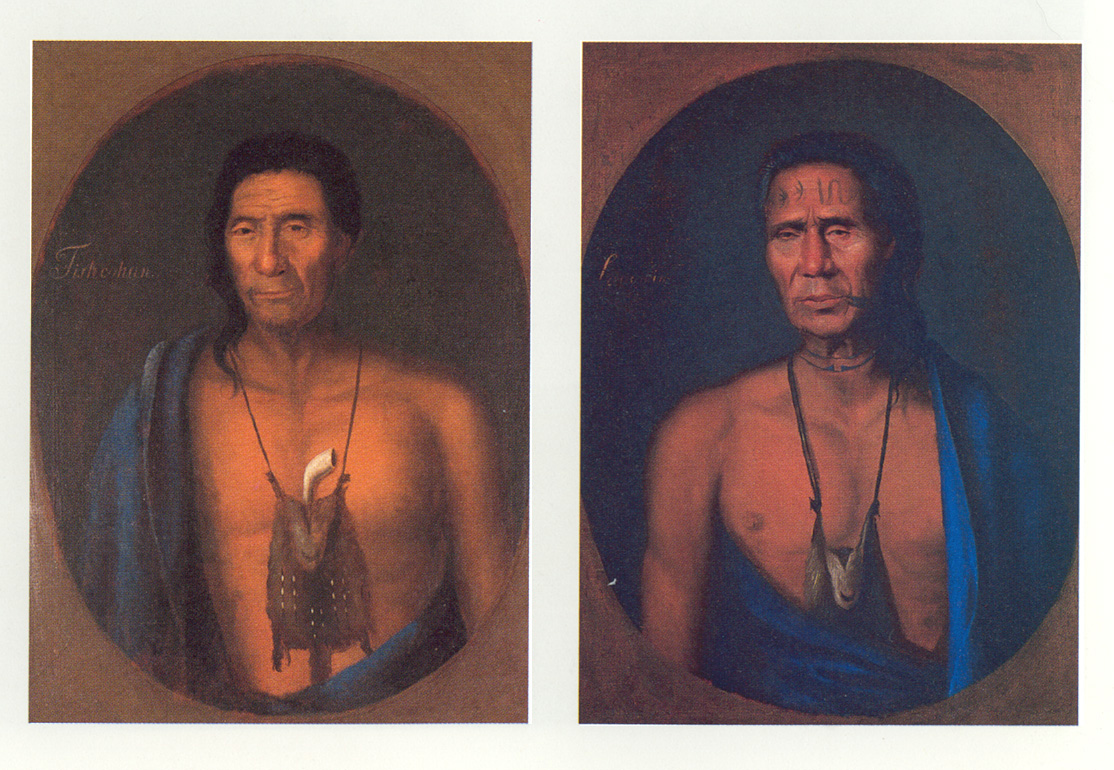 Name: Author: Date: Relevance: |
"Tishcohan" and "Lapowinska"
Paintings by Gustavus Hesselius, 1735
Hesselius was a Swedish portrait painter and one of the earlier immigrants to Philadelphia. His letter to his mother describes the religious and horticultural diversity of Philadelphia.
|
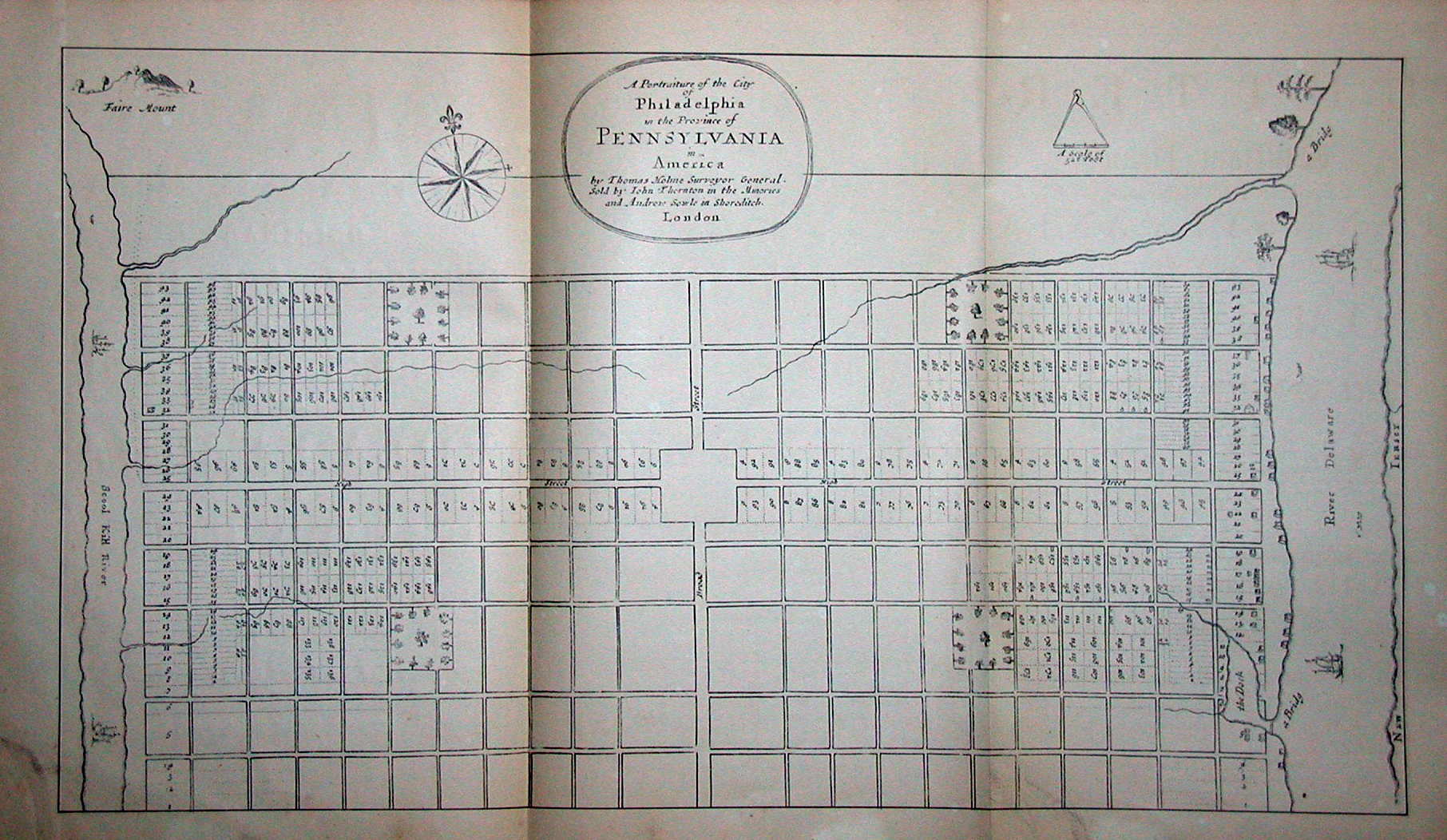 Name: Author: Date: Relevance: |
Portraiture of the City of Philadelphia"
Thomas Holme, 1683
Shows the grided map of Penn's vision for a utopian green city with broad central streets, Broad and High streets, that would serve as a buffer to fire.
|
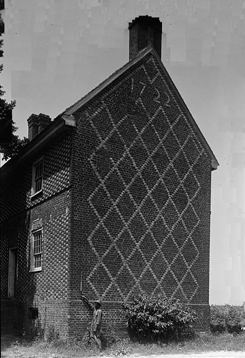 Name: Author: Date: Relevance: |
Abel and Mary Nicholson House, 1722
This house in Salem, NJ is an example of the Quaker aesthetic for its basic use of materials. Its study carrol or writing closet is indicative of the unusually high literacy rate and use of books in early America.
|
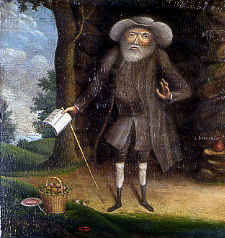 Name: Date of Birth/Death: Relevance: |
Benjamin Lay (1681-1760)
A famous Quaker activist known for his outlandish theatrics in combating slavery (long before the Quakers were universally against the practice).
|
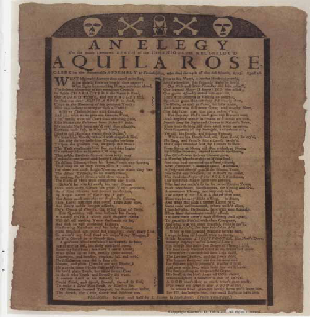 Name: Author: Date: Relevance: |
Elegy on the Death of Aquila Rose
Samuel Keimer - printed by Ben Franklin
1723 Was the first example of Franklin's printing in Philadelphia. Demonstrated his skills and got him work as a printer for hire. |
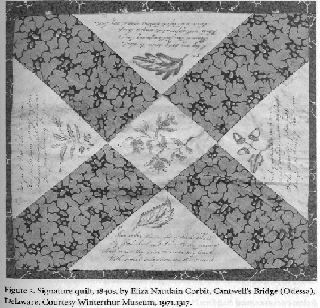 Name: Author: Date: Relevance: |
Signature Quilt
Eliza Naudain Corbit, 1840s
A "performative" piece that Bernard Herman says “situates its maker and owners in contexts including social rank, gender, wealth, taste, and faith.” It demonstrates the important Quaker principle of "living in the world"
|
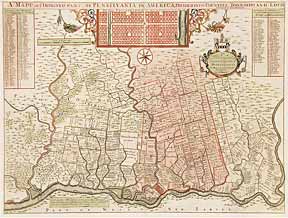 Name: Author: Date: Relevance: |
Map of the Improved Part of the Province of Pennsylvania in America"
Thomas Holme, 1687
This was map was an important piece of Penn's marketing campaign to sell land. It took Holme several years to complete it, much to the frustration of Penn.
|
|
Name: Date: Relevance: |
London Fire, 1666
This great fire destroyed a large part of the central city of London. The efforts to rebuild London later inspired young William Penn to design his city of Philadelphia in a grid with wider streets to avoid a similar tragedy.
|



